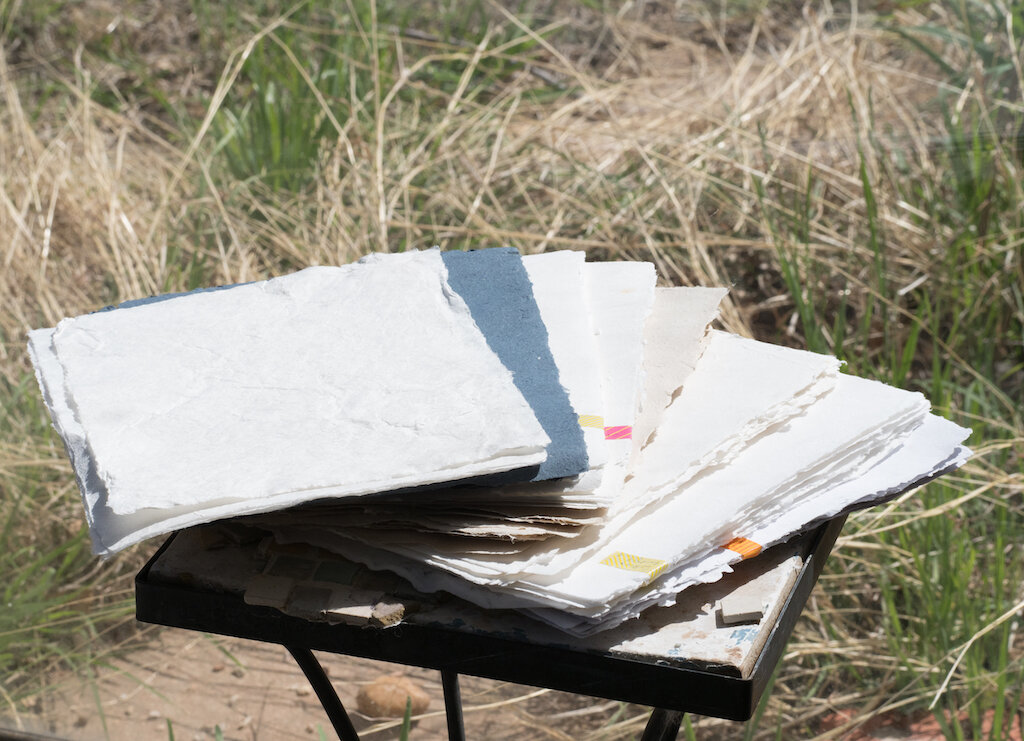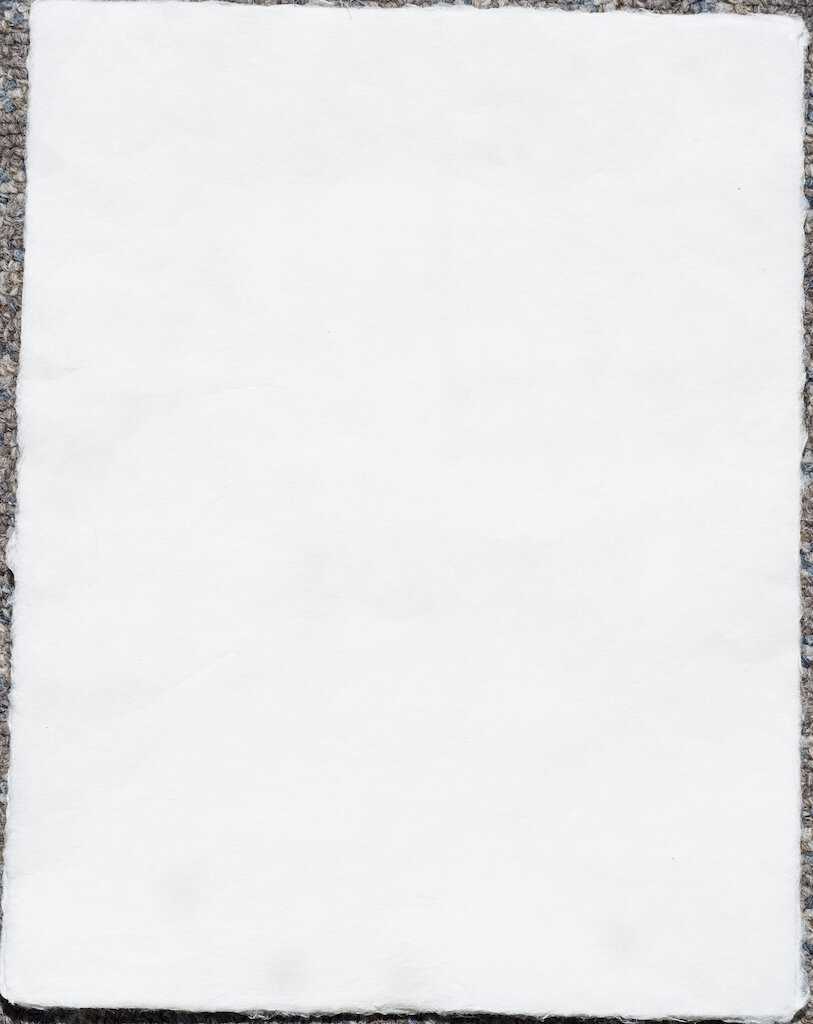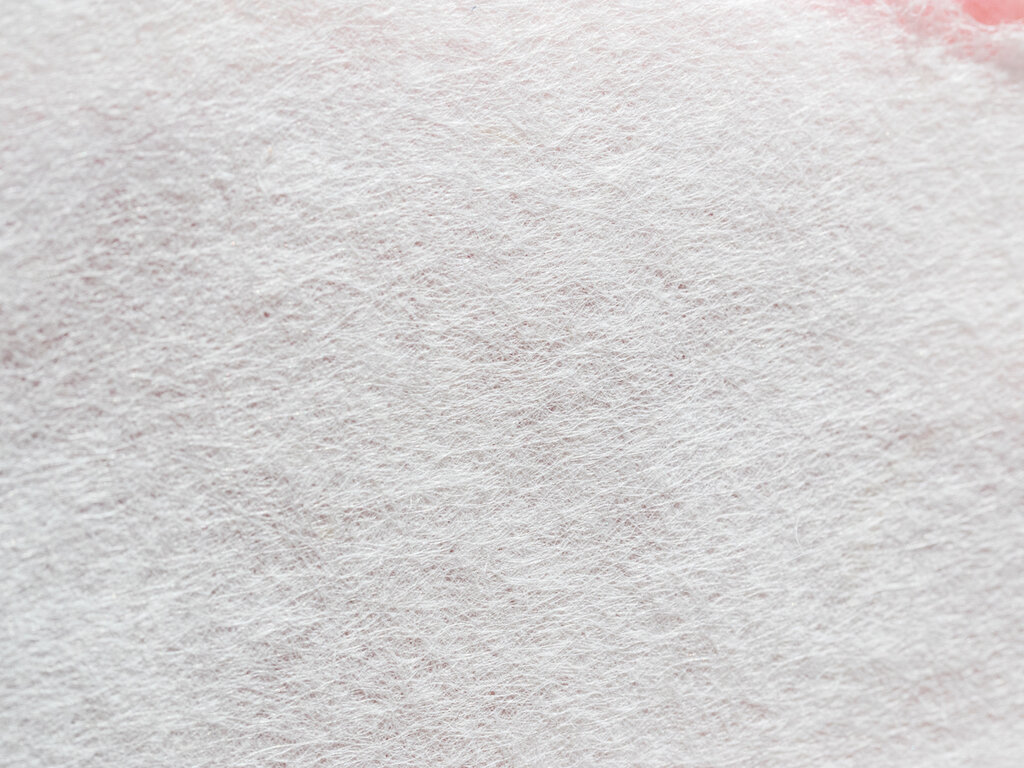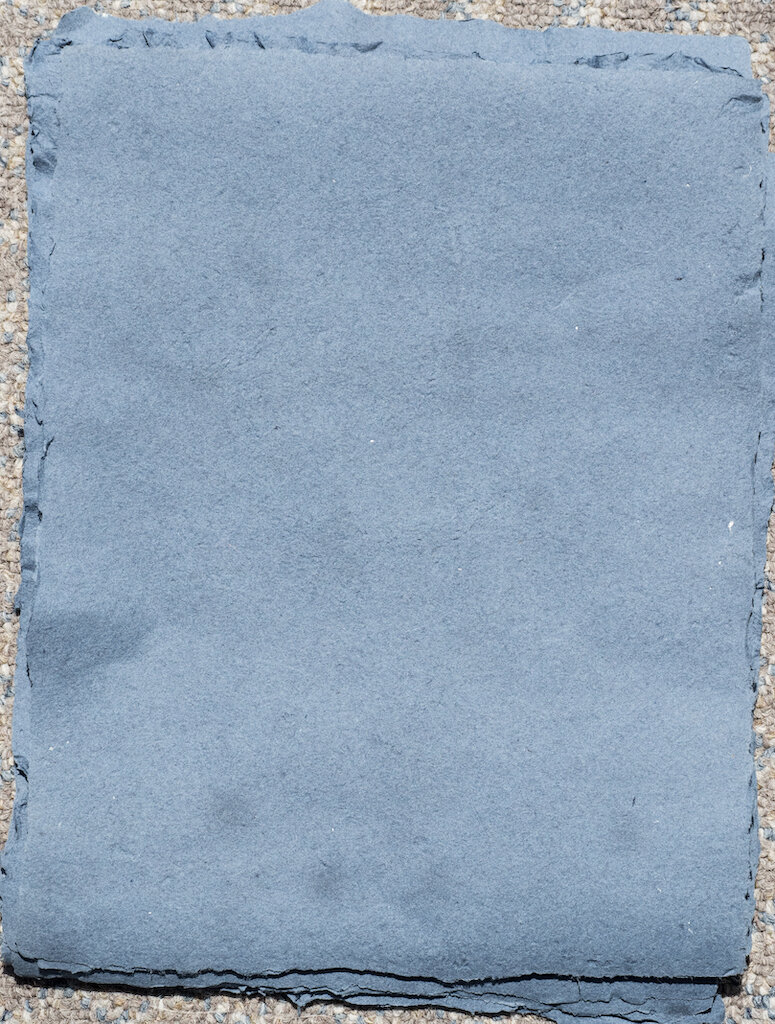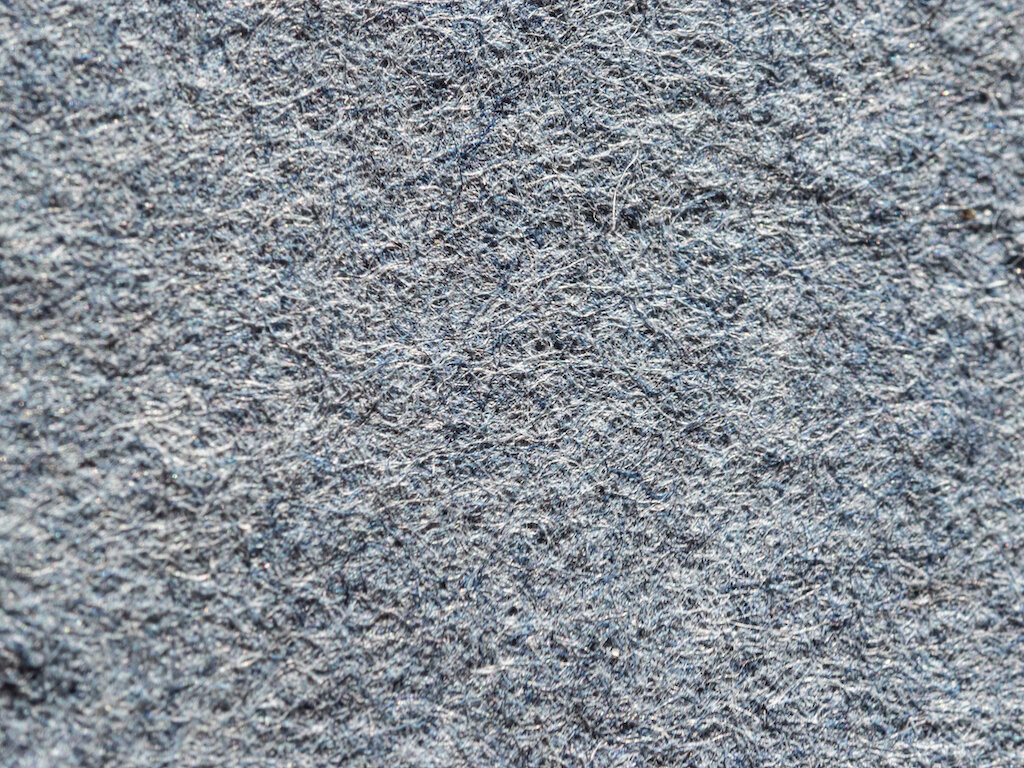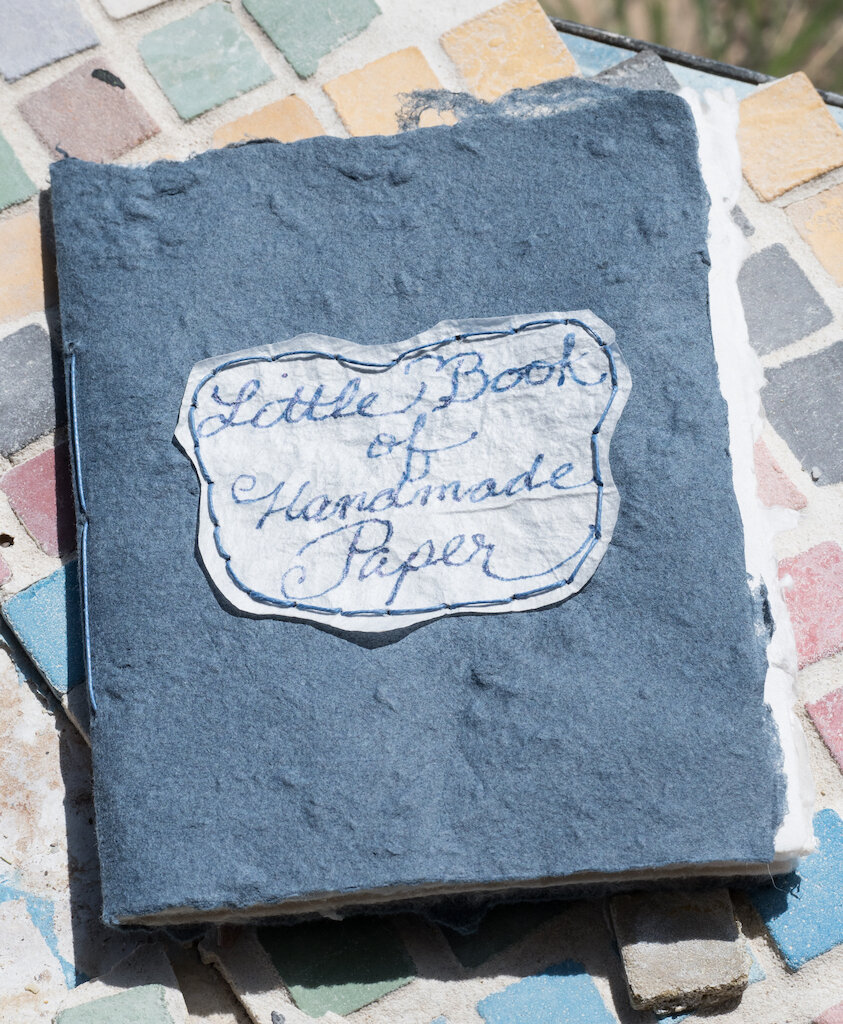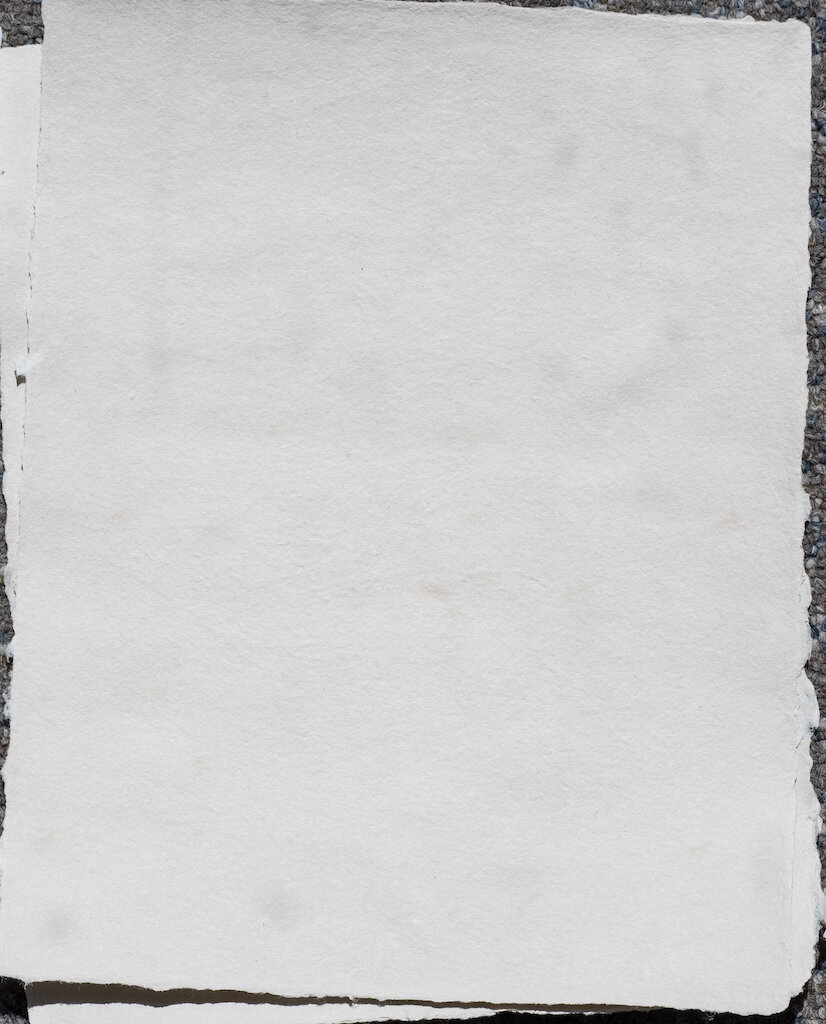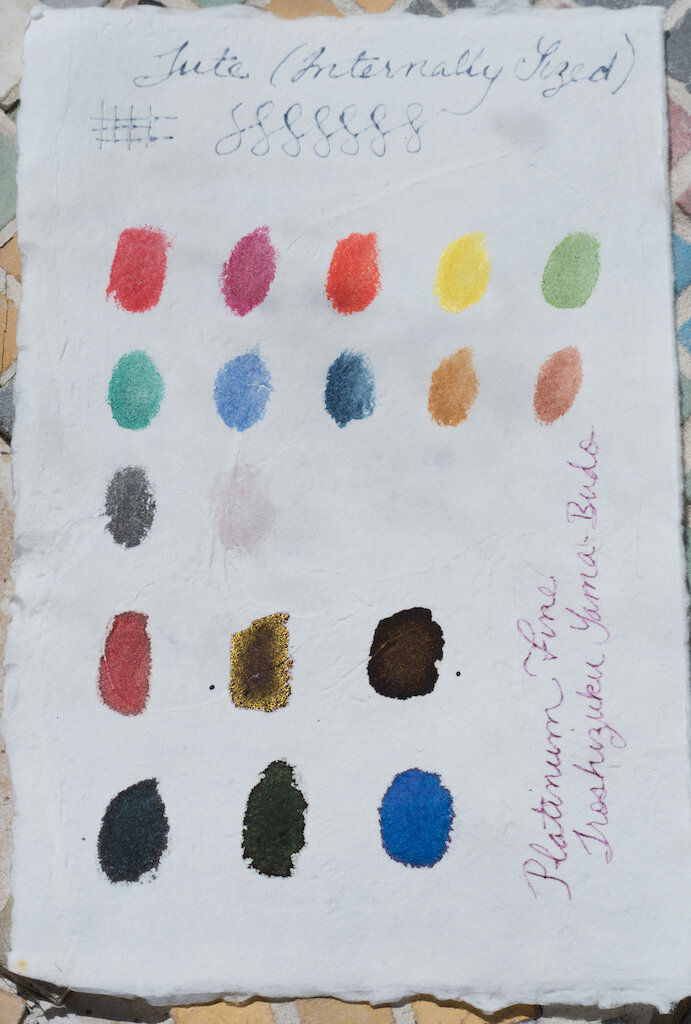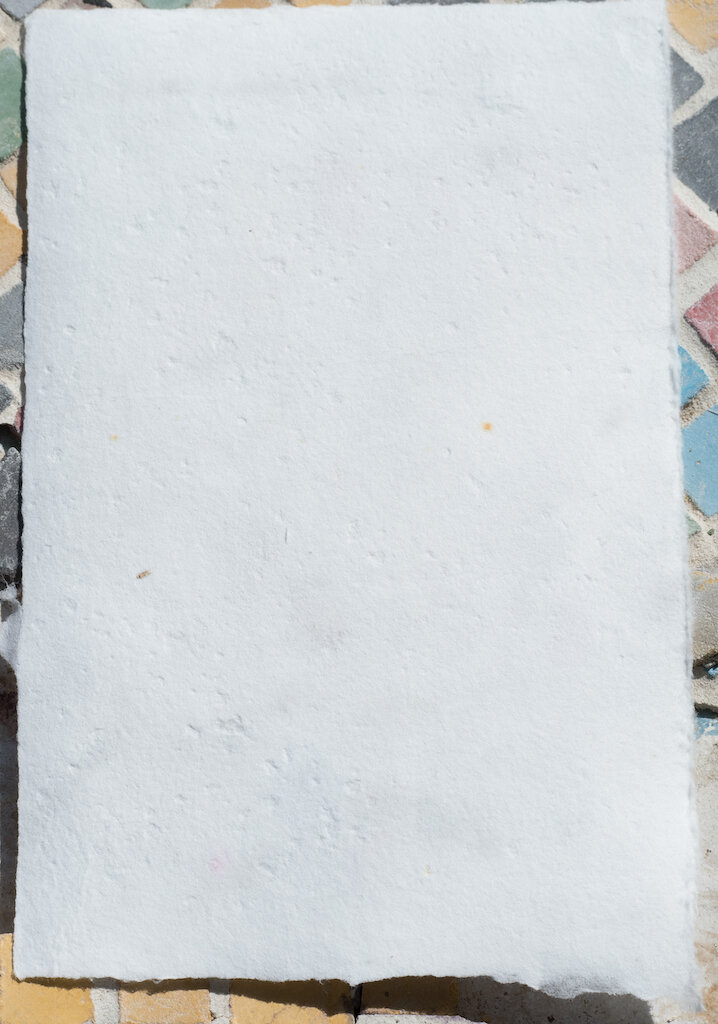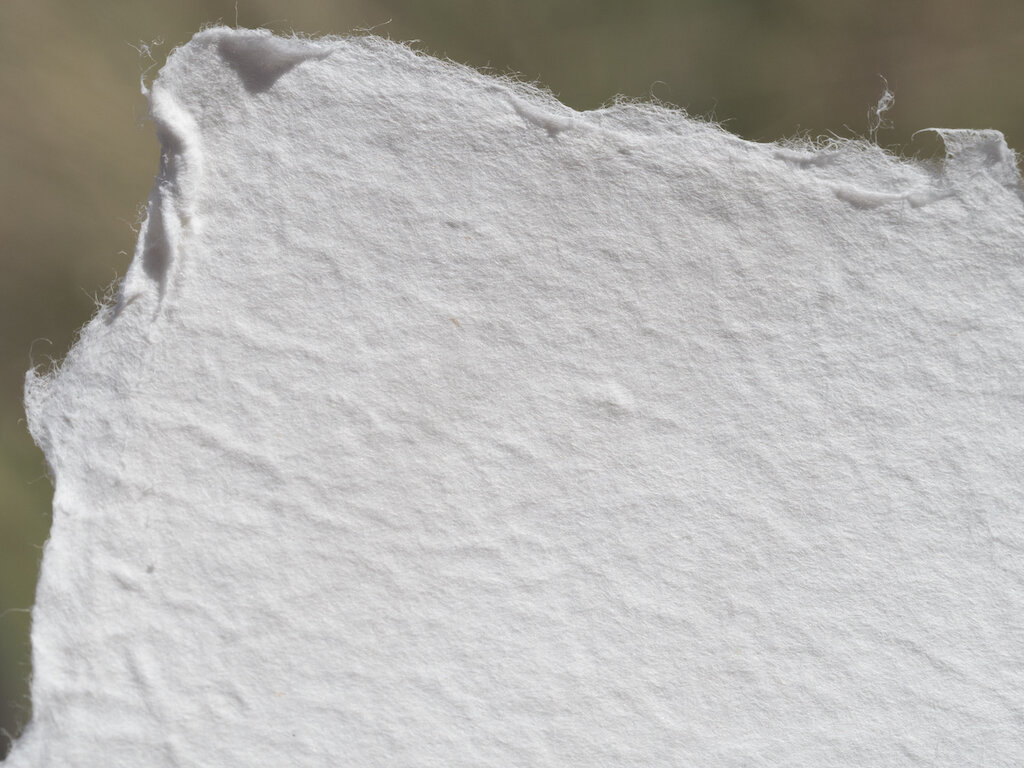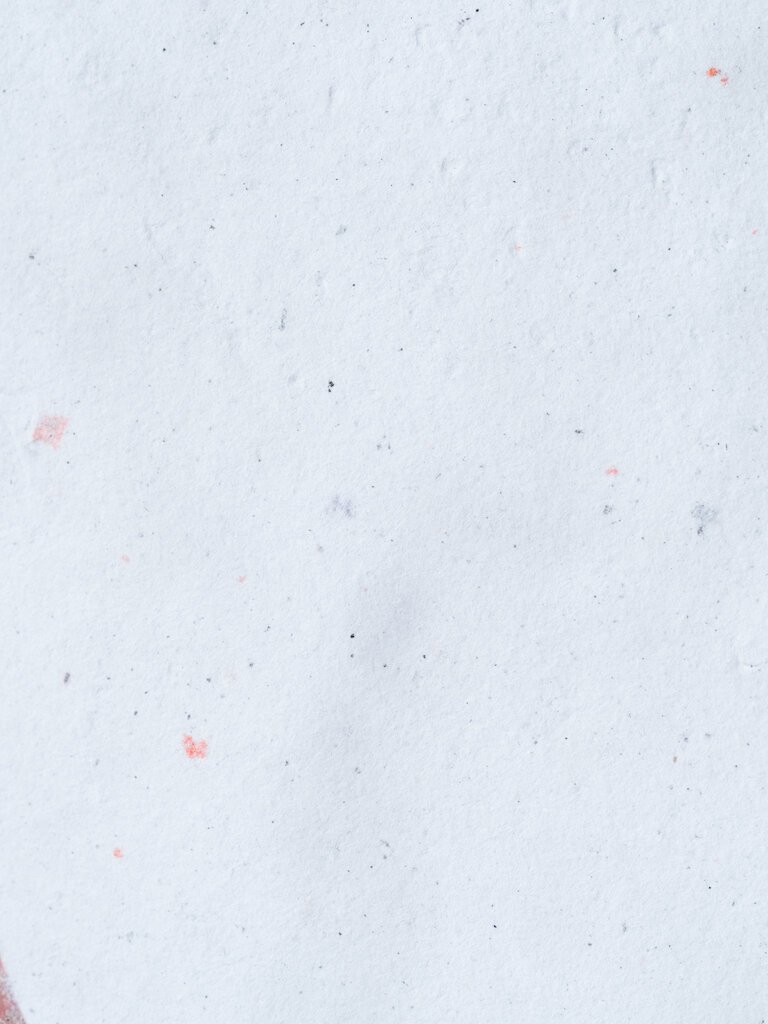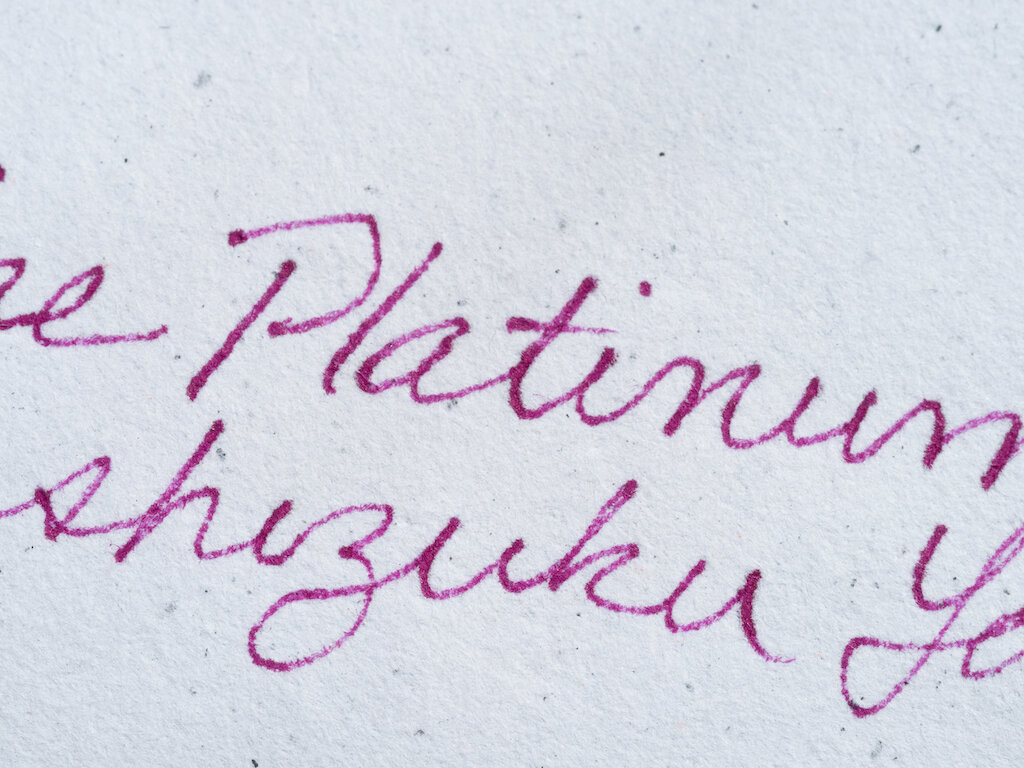(Susan M. Pigott is a fountain pen collector, pen and paperholic, photographer, and professor. You can find more from Susan on her blog Scribalishess.)
In last week's review, I discussed the equipment and paper making process using Carriage House Paper's Papermaking Kit. This week, I'm going to focus on the results: the paper I've made so far. I'll discuss each paper's characteristics, the sizing, and how it handles watercolors, ink swabs, and fountain pens.
Unsized and Sized Paper
Paper that has no sizing is porous and soaks up paint and ink like a paper towel. Unsized paper can be used for paper crafts and as endpaper for books, but it isn't good for painting or writing. I used unsized paper as the background for some flowers my daughter pressed.
In order to make handmade paper usable with paint and ink, you have to size it. There are two ways to size paper: external sizing and internal sizing. External sizing is applied after the paper is made and dried. I attempted to do this with my Abaca paper using wheat starch paste (see below). Internal sizing is a liquid mixed into the pulp before pulling sheets of paper. I used the sizing that came with my kit, called Ketene Dimer Emulsion. It is chemical-based sizing and contains no animal products.
Abaca Premium (Externally Sized)
The first batch of paper I made was from premium Abaca pulp. Abaca means "Manila Hemp" in the Philippine language. The pulp is derived from the stalks of musa textilis, a type of banana tree (Source: Carriage House Paper).
Abaca is an incredible fiber that is very strong. You can make virtually translucent sheets of paper that don't tear, even when wet. In the photo below, I'm holding a freshly pressed piece of Abaca in my hand.
Once dry, the Abaca becomes more opaque. In this close up, you can see the fibers closely knit together.
When I made this paper, I did not have any internal sizing, so I decided to use an external sizing method. I mixed up a batch of wheat starch paste and attempted to coat the sheets with the paste. I'm not sure if my paste was too thick or too thin or what went wrong, but the paper curled up, and the paste wasn't particularly effective in making the paper usable. The watercolors and inks bled and my fountain pen didn't fare any better.
I'm not giving up on this paper, because it is absolutely beautiful. Now that I have internal sizing, I'm going to make another batch. A representative from Carriage House suggested that Abaca is one of the better pulps to use with fountain pens, so I'm looking forward to giving it another try.
Denim Paper (No Sizing)
Denim pulp is made from 100% cotton old blue jeans. Unfortunately, you can't create denim pulp at home, because a blender can't shred up blue jeans sufficiently. Carriage House has a Hollander Beater, a piece of equipment that costs (minimum) $10,550--so only professional paper makers own these. However, you can buy dried pulp made with a Hollander beater, which then can be hydrated and blended to make paper at home.
One sheet of this dried pulp made an enormous amount of indigo blue wet pulp. I made such a mess making denim paper, but it was so worth it. The sheets are a gorgeous indigo blue and they are strong and nicely textured.
This paper is unsized, so I didn't attempt to use watercolors or fountain pens on it. Instead, I used a Slicci Gel Pen (silver) to write the alphabet, and it turned out fine.
I used the denim paper (some came out extra lumpy) for the cover of my book of paper samples.
Of the paper I've made so far, the Denim Paper is my favorite.
Flax Paper (Internally Sized)
Flax fiber comes from the Linum Usitatissimum plant, which has to be throughly beaten and processed to remove the bast. This is processed further and bleached to produce sheets of pulp (source: Carriage House).
The paper produced with this pulp is beautiful and smooth, and internal sizing makes it usable with watercolors and ink swatches. There was no show through or bleed through when I tested the paper.
However, writing with a fountain pen on the Flax Paper wasn't especially pleasant. The ink didn't flow well and the nib caught in the fibers.
Flax/Hemp Combination (Internally Sized)
Because I had some Flax pulp leftover, I decided to combine it with Hemp pulp to make my next batch of paper. Hemp comes from the cannabis sativa plant (yes, it's a relative of the marijuana plant). Like flax, hemp fiber is strong and makes an excellent sheet of paper.
The combination of the two fibers (and internal sizing) resulted in some beautiful sheets that took watercolor well and ink swatches fairly well (there was some bleed through with the inks). This paper even allowed sheen in the Lamy Dark Lilac ink to peek through.
Writing with a fountain pen was disappointing, however. Once again, the ink did not flow well and the nib dug into the paper.
Jute and Jute with Kenaf Fiber Inclusions (Internally Sized)
Jute comes from the Corchorus capsularis plant, which can grow up to ten feet tall (source: Carriage House). Jute is what burlap bags are made of, so you'd expect the paper to be coarse and rough. But it's not--instead it produces a lovely, soft sheet.
With internal sizing added, Jute paper accepts watercolor and ink swabs easily. In fact, this paper is my favorite so far for painting. Ink swabs look vibrant and sheen in Lamy Dark Lilac was quite pronounced.
Alas, the paper was too soft and fiber-filled for writing with my Platinum fine nibbed pen. It might work better with broader nibs.
I tried an experiment with the Jute paper. Included in my kit were three bags of fiber that require a Hollander Beater to process. But, I was told that I could use the fibers as inclusions in my paper. So, I used the most interesting fiber, Kenaf, and cut it up with scissors to make it a bit finer. For my last few sheets of Jute, I added the fiber into my vat. The result was fantastic! The bits of fiber give the paper interesting textures and add beauty to the plain sheet. Of course, fiber like this will definitely catch nibs, so I plan to use it as decorative paper, not for writing.
Cotton Linters, 2nd Cut (Internally Sized)
I was excited to try the Cotton Linters pulp because it is also supposed to be good for fountain pens. The pulp comes from the cotton plant's short seed hairs. These are processed in a linter machine in two passes. The second pass results in second cut Cotton Linters (source: Carriage House).
The resulting paper feels very much like cloth. It is soft and a lovely white color. Watercolors and ink swabs are vibrant on this paper and there's no show or bleed through.
The paper I made was rather thick, so writing with a fine nib didn't work particularly well. The nib sank into the paper and the ink was sopped up.
I plan to experiment more with Cotton Linters paper. I suspect that if I make the sheets thinner and add more sizing, I could make it work with broader nibbed fountain pens.
Scrap Paper (No Sizing)
Scrap Full Page
Honestly, I should have started my paper making adventure with scrap paper. That's what most people do, in fact. But I was too excited to try out the pulp that came with my kit. When Carriage House sent my replacement bottle of sizing, it was packaged in a large batch of shredded paper. So, I decided to make paper from it.
I soaked the shredded paper overnight in water. Then I blended it in small batches.
When I pulled my first sheet, I gasped. It was beautiful! I did not expect this. I thought the paper would look dingy grey and be chunky. Not at all. The paper was off white with little bits of print and color showing. I love this paper!
I didn't add any sizing to this batch because I thought, perhaps, the scrap paper's original sizing might make it watercolor and ink worthy. But it wasn't. Watercolor and ink swabs both bled considerably.
Surprisingly, writing on the paper wasn't too bad. The nib caught on the fibers, but the ink seemed to flow pretty well.
Conclusion
What can I say? I am in love with making paper by hand. This is the splashiest, messiest, most amazing process!
Although I'm disappointed that none of the paper I've made so far works well with fountain pens, I'm planning to keep experimenting with the fibers and different amounts of sizing. I will make paper that works with fountain pens!
My main takeaway is this: if you're at all interested in paper making, I highly recommend the Carriage House Papermaking Kit. You'll receive a well-made mould and deckle that will outlast any makeshift one you create on your own. You're provided felts, sizing, and fibers so you can get started quickly. This kit made it possible for me to make quality paper (and lots of varieties of paper) without any experience at all. I can't wait to see the results after a few months of practice!
(I purchased the Carriage House Papermaking Kit with my own funds.)
Enjoy reading The Pen Addict? Then consider becoming a member to receive additional weekly content, giveaways, and discounts in The Pen Addict shop. Plus, you support me and the site directly, for which I am very grateful.
Membership starts at just $5/month, with a discounted annual option available. To find out more about membership click here and join us!

